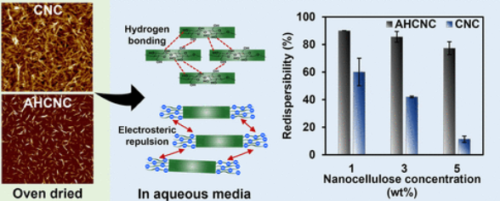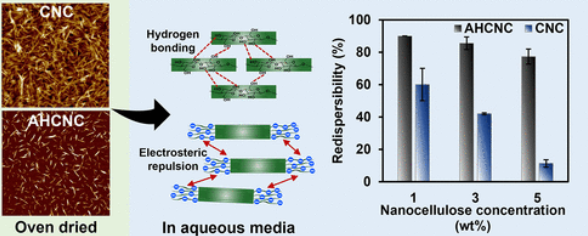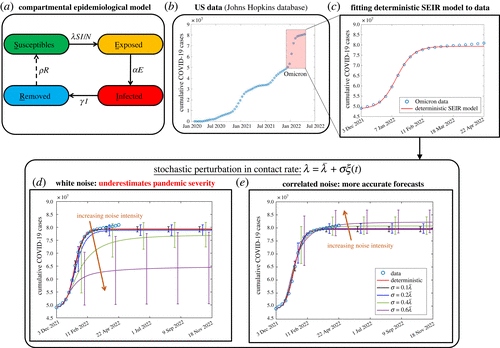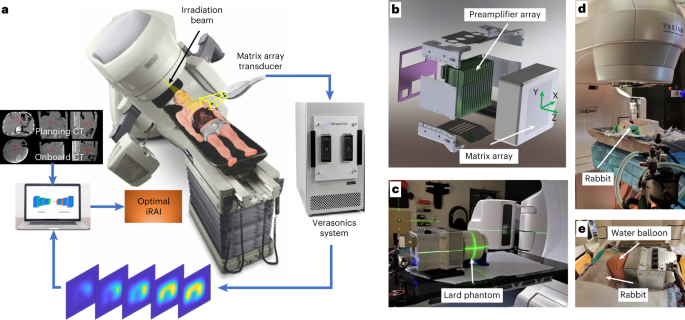2023-01-11 ペンシルベニア州立大学(PennState)
ペンシルベニア州立大学の化学工学研究者チームは、ナノ結晶の乾燥メカニズムを研究し、ナノ結晶の機能を完全に保持したまま水性媒体中で高度に再分散させ、保管や輸送を容易にするナノテクノロジーを提案した。研究成果は、「Biomacromolecules」誌に掲載されました。この研究成果は、1月17日付の雑誌の表紙にも掲載される予定です。
このナノ結晶は、毛と呼ばれる末端に負に帯電したセルロース鎖を持っています。これは、電荷駆動型(静電的)と自由体積依存型(立体的)を意味する用語である「electrosteric repulsion」(エレクトロステリック・レパレーション)の結果である。
毛の生えた粒子を再分散させた後、研究者達は、それらをテストして、そのサイズと表面特性を測定し、その特性と性能は、乾燥させていないものと同じであることを発見しました。また、この粒子は、塩分濃度やpH値の異なるさまざまな液体混合物中で良好な性能を発揮し、安定性を維持できることも分かりました。
「毛状ナノ結晶は、塩濃度が高くても再分散することができます。これは、過酷な媒体でも機能を維持できるため、幅広い用途に使用できる可能性があり、好都合です。「この研究は、添加物やエネルギー集約的な方法を用いずに、ナノセルロースを持続可能かつ大規模に処理するための道を開くかもしれません。
<関連情報>
- https://www.psu.edu/news/engineering/story/researchers-uncover-mechanisms-easily-dry-redisperse-cellulose-nanocrystals/
- https://pubs.acs.org/doi/full/10.1021/acs.biomac.2c00518
セルロースナノ結晶の再分散性をナノテクノロジーで制御する Nanoengineering the Redispersibility of Cellulose Nanocrystals
Breanna Huntington, Mica L. Pitcher and Amir Sheikhi
Biomacromolecules Published:December 5, 2022
DOI:https://doi.org/10.1021/acs.biomac.2c00518

Abstract
Enhancing the redispersibility of dried colloidal particles to yield stable dispersions after rehydration is a persistent challenge in the sustainable processing of nanocelluloses due to hydrogen bonding-induced irreversible aggregation. Programming nanocelluloses, such as cellulose nanocrystals (CNC), with moieties that enable colloidal repulsion after rehydration may address this challenge and contribute to the United Nation (UN)’s sustainable development goals (SDGs) of urban development and sustainable living (SDGs 9 and 11) and cradle-to-cradle processing (SDG 12). We hypothesize that imparting electrosteric repulsion to CNC via polyanionic disordered cellulose chains (hairs) protruding from each end may render the dried nanocrystals highly redispersible in aqueous media. Anionic hairy CNC (AHCNC), that is, CNC decorated with dicarboxylated cellulose (DCC) chains, were synthesized by the preferential, successive periodate/chlorite oxidation of the disordered regions of cellulose fibrils, bearing >5 mmol of carboxylate groups per gram. The colloidal properties of AHCNC were compared with those of sulfate half-ester group-functionalized CNC and TEMPO-oxidized CNC (TOCNC) after redispersion in aqueous media, followed by comparing the redispersibility of AHCNC and CNC in aqueous solutions containing monovalent or divalent cations and at varying pH. The AHCNC had remarkable aqueous redispersibility even at high ionic strengths and extreme pH. The unique redispersibility mechanism of dried AHCNC relies on the synergistic steric and electrostatic repulsion forces, recuperated upon the rehydration of DCC. This work may open new opportunities for more sustainable and cost-effective handling and processing of nanocelluloses.



